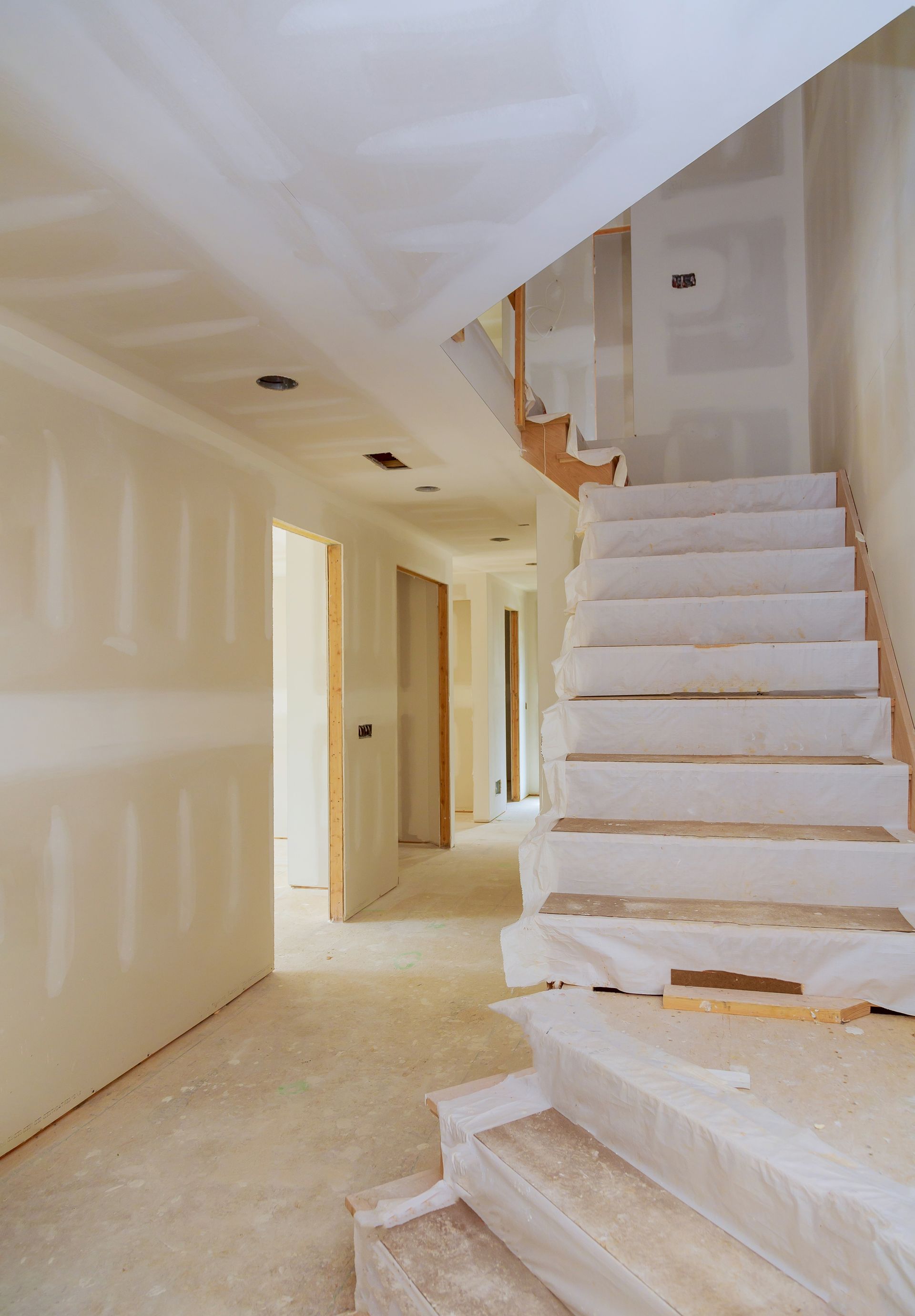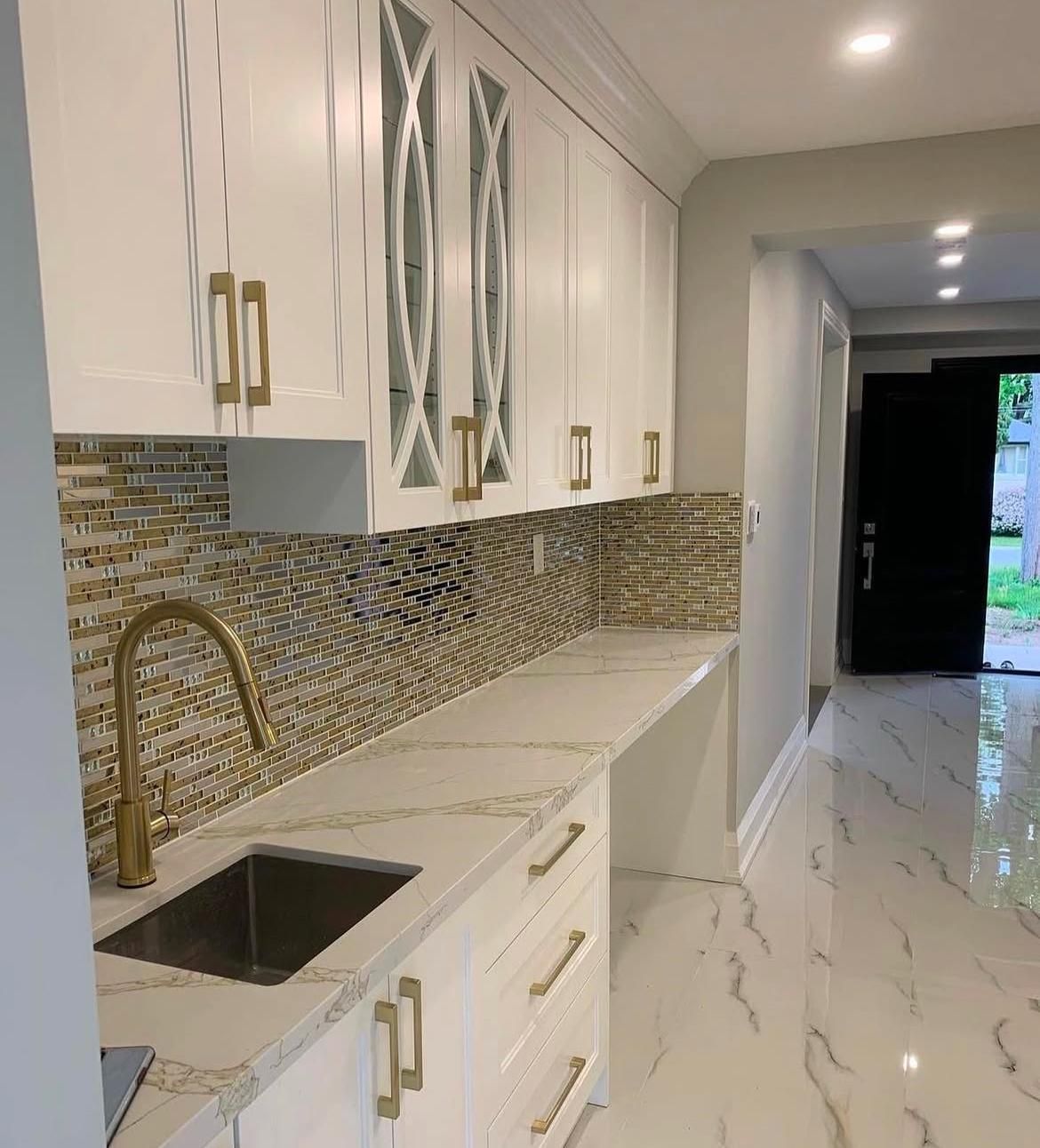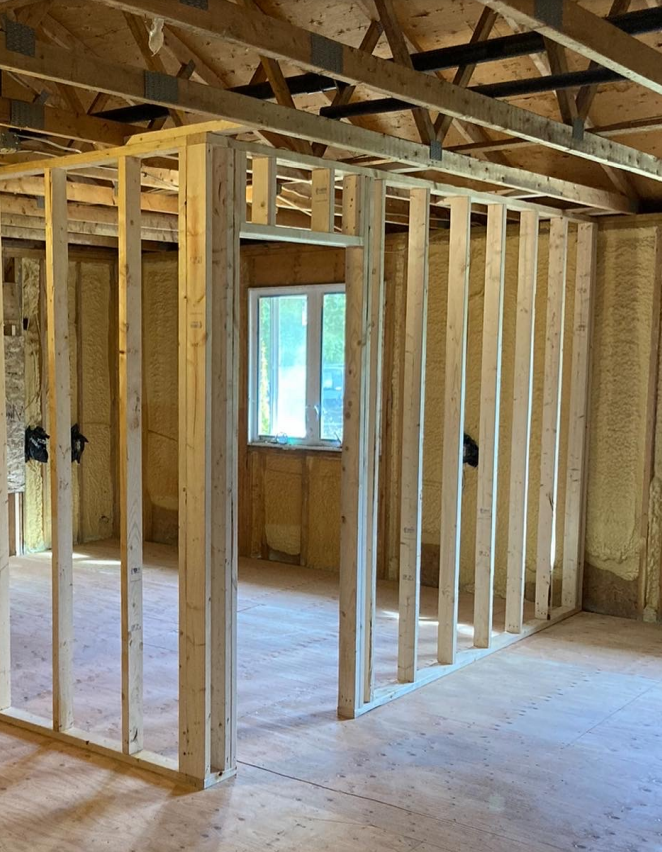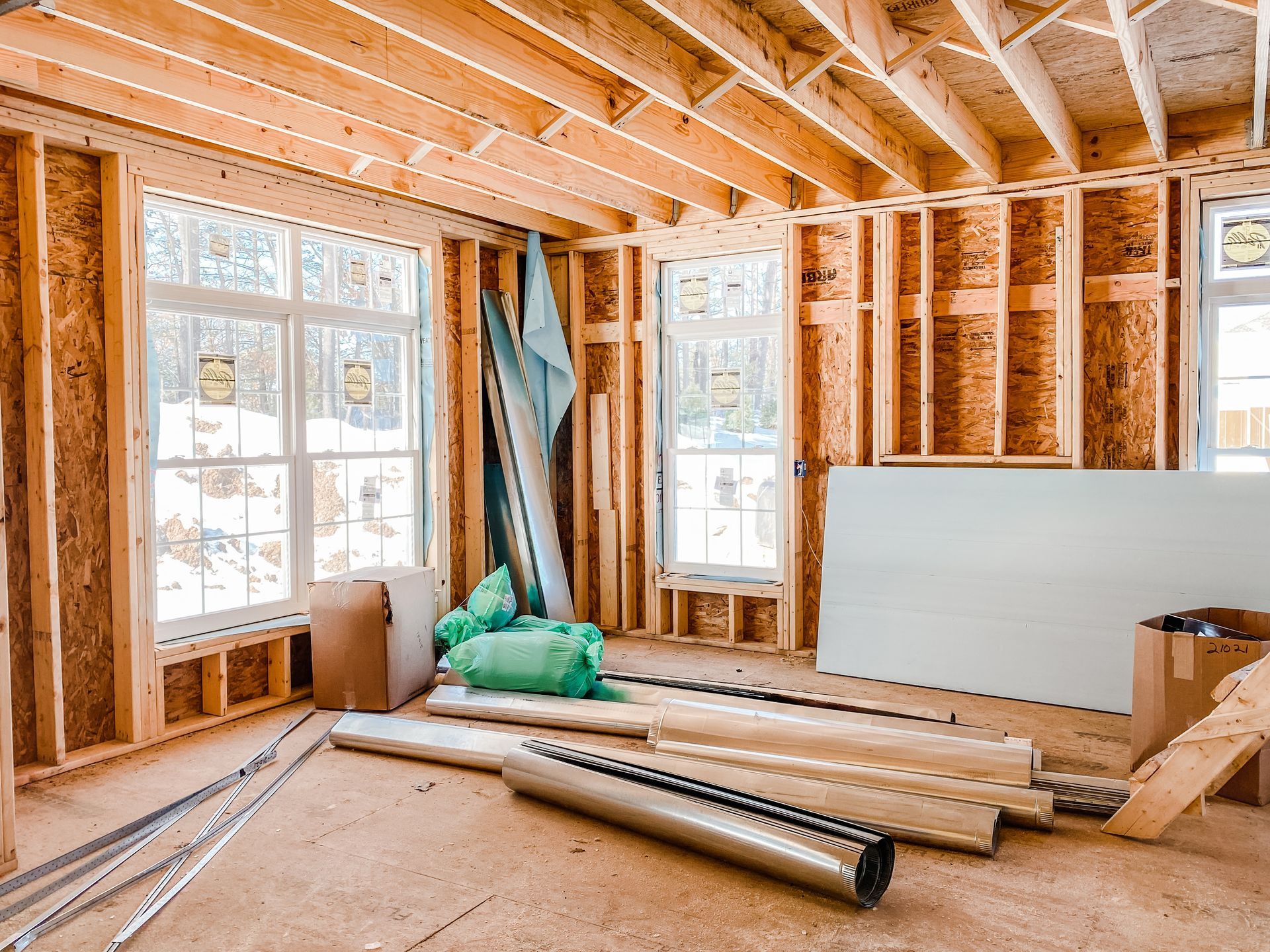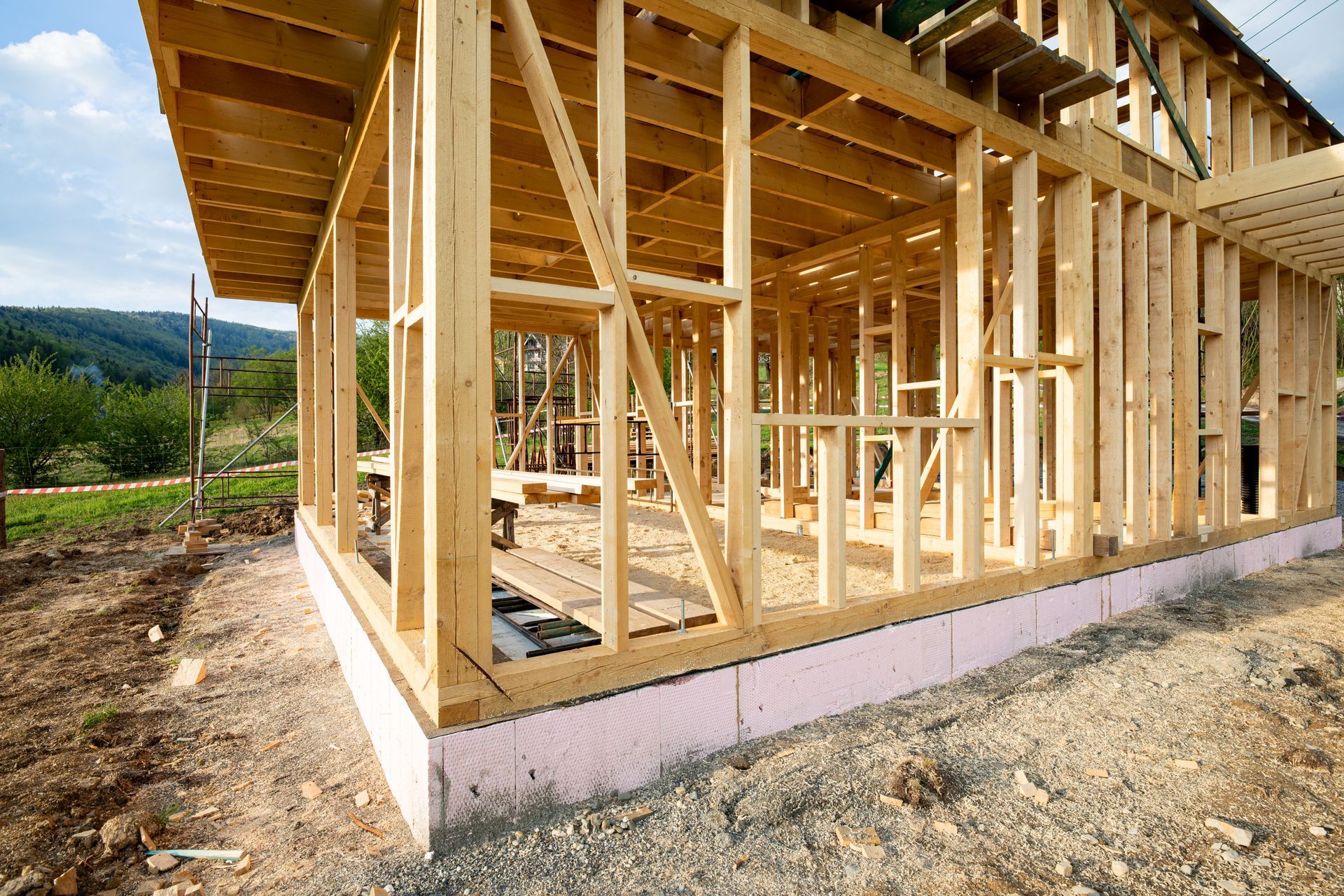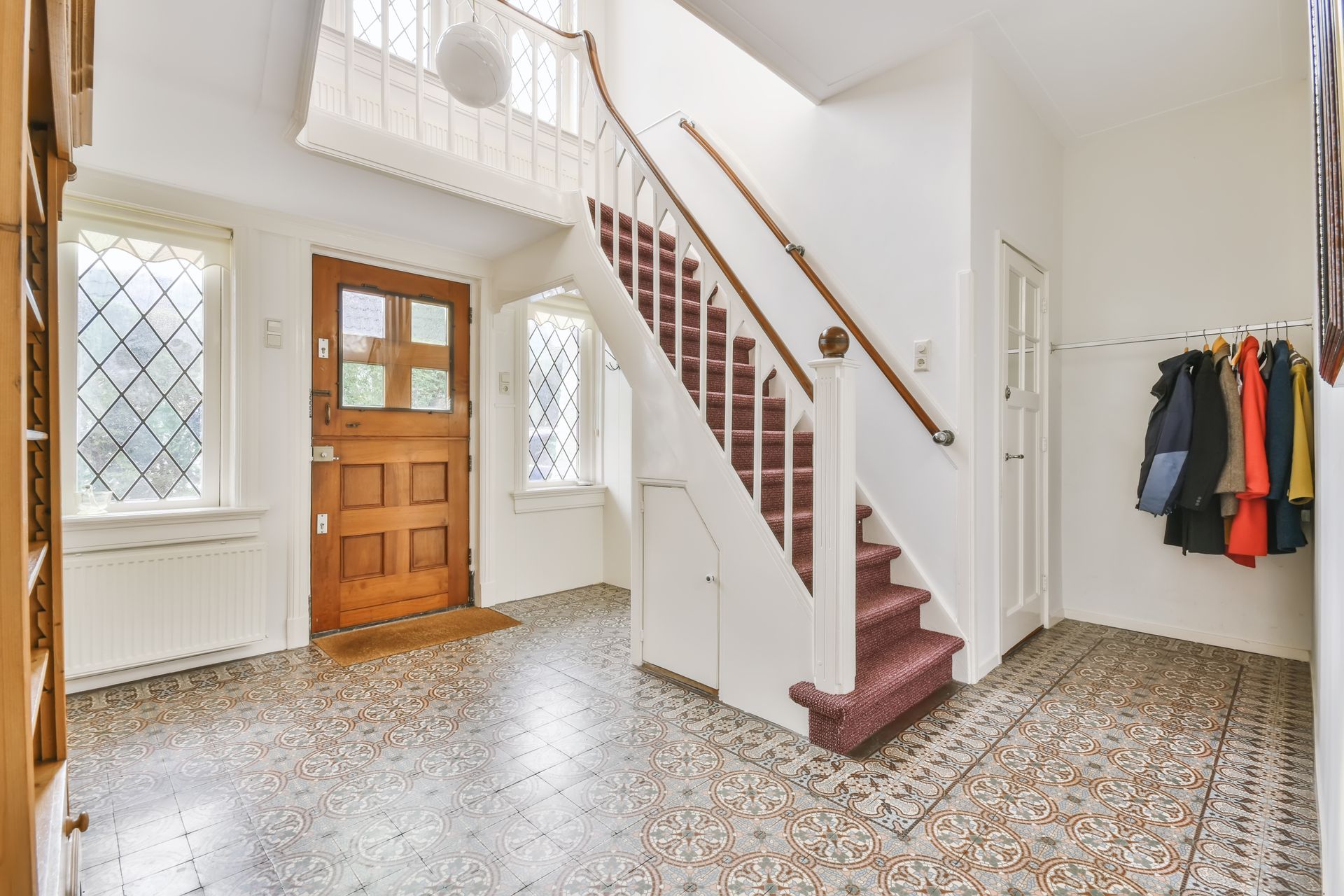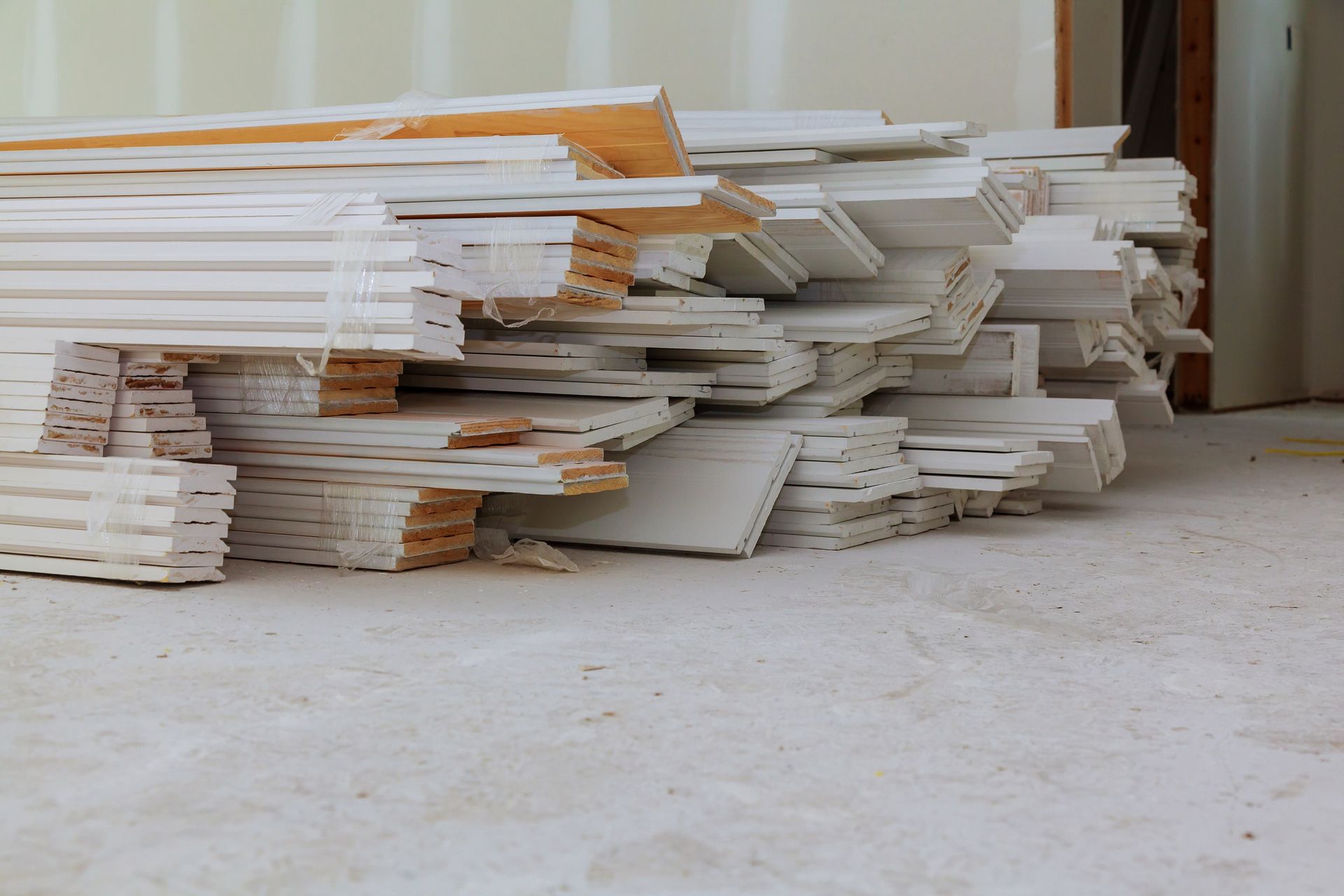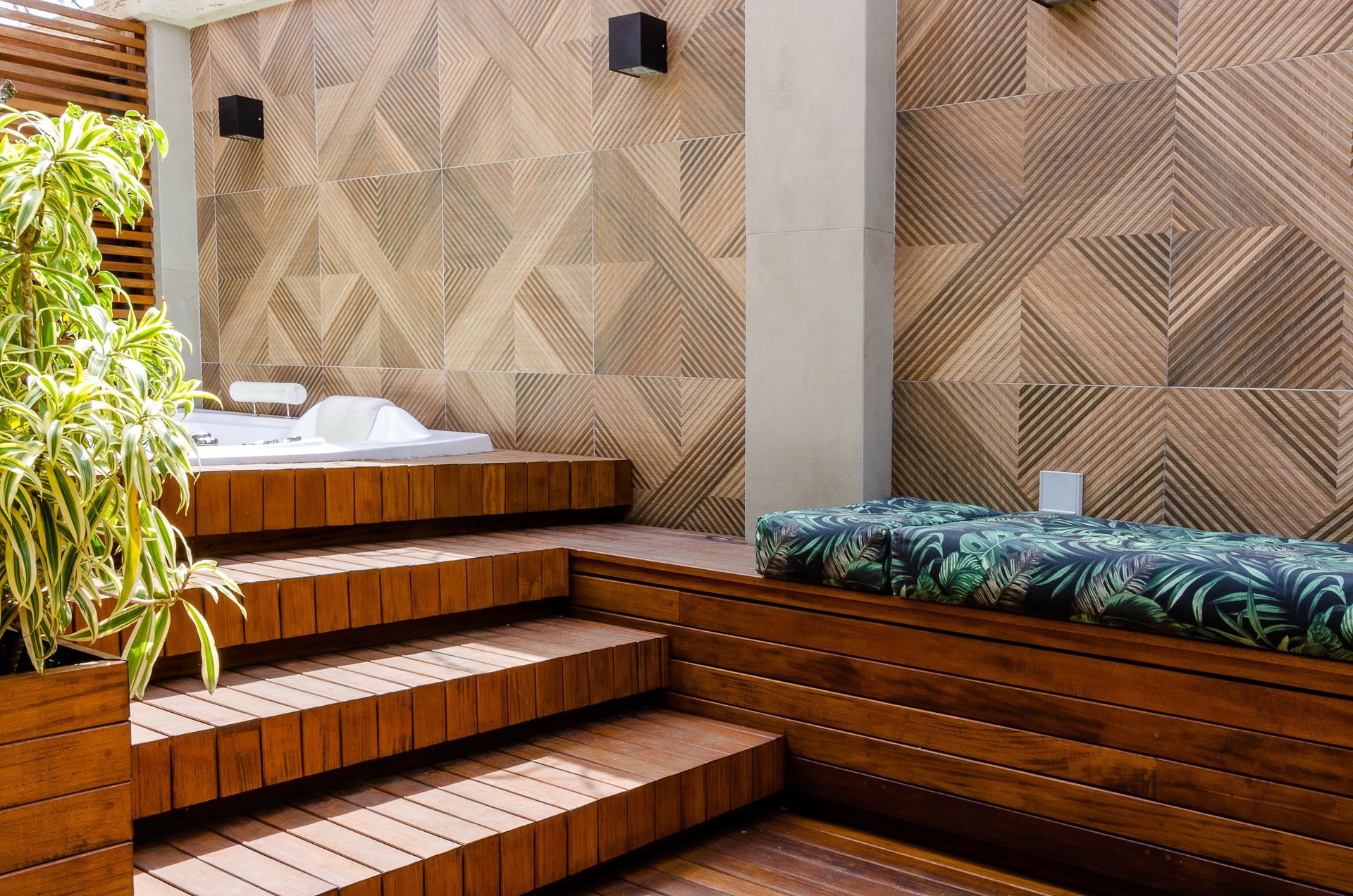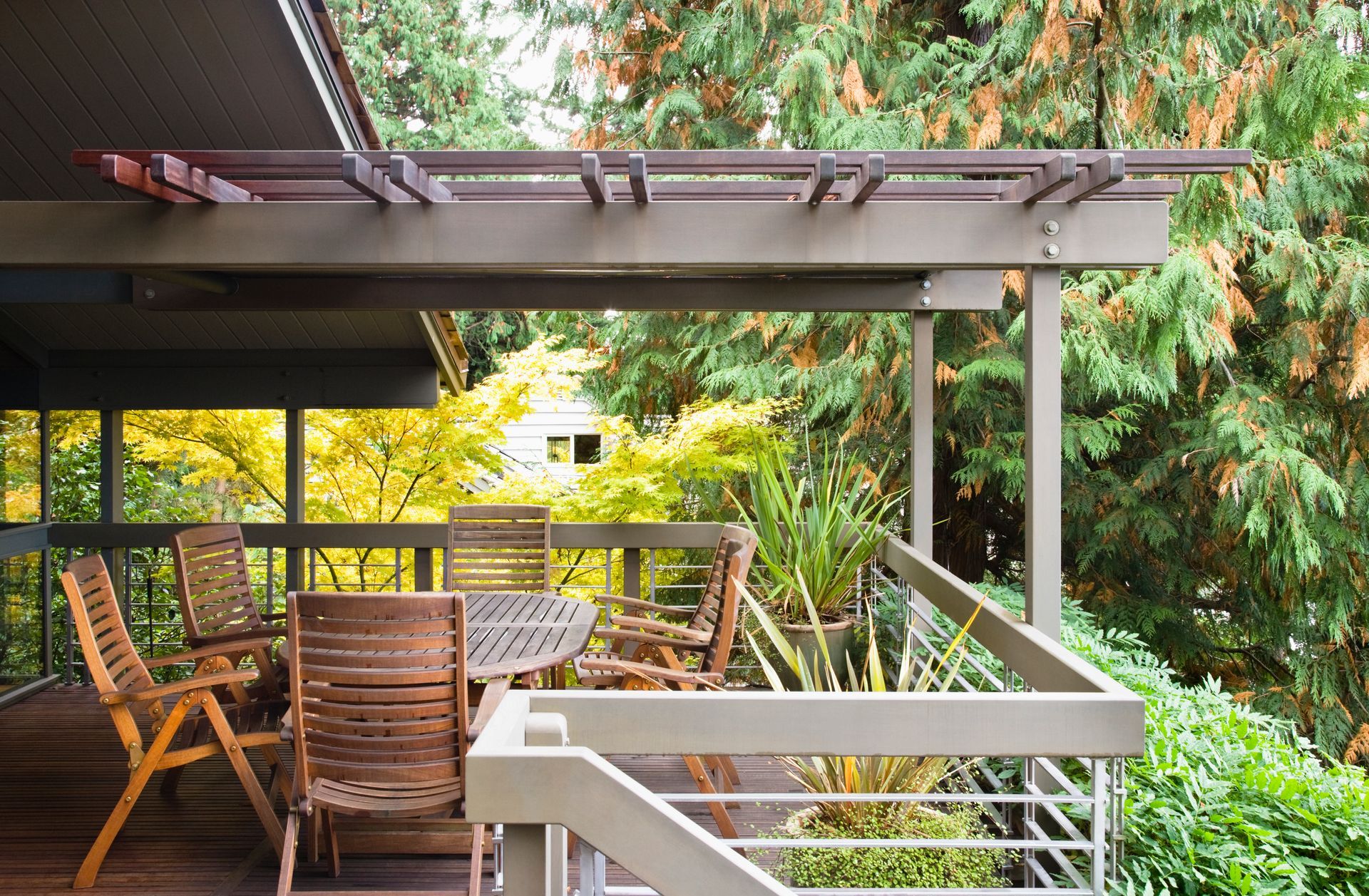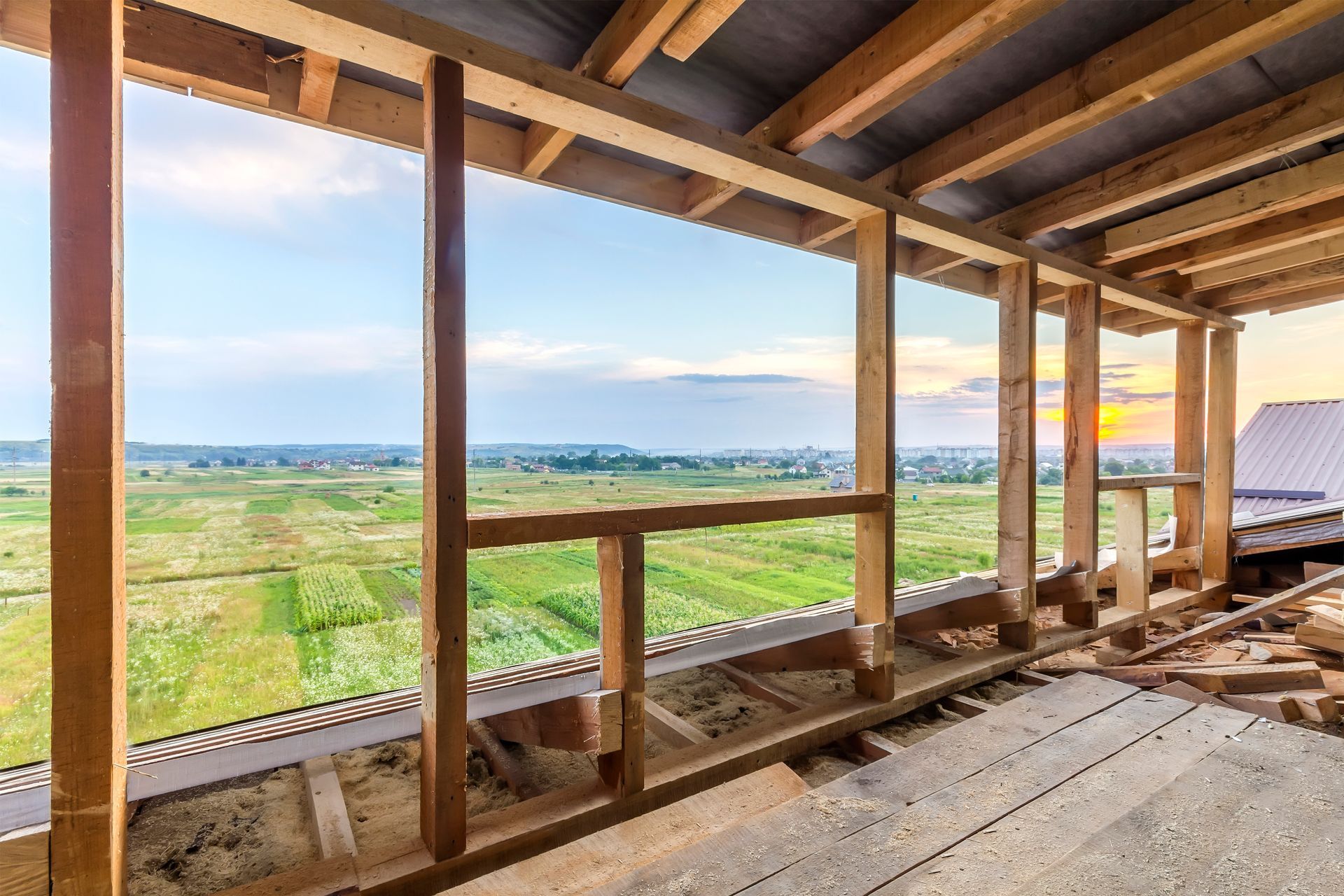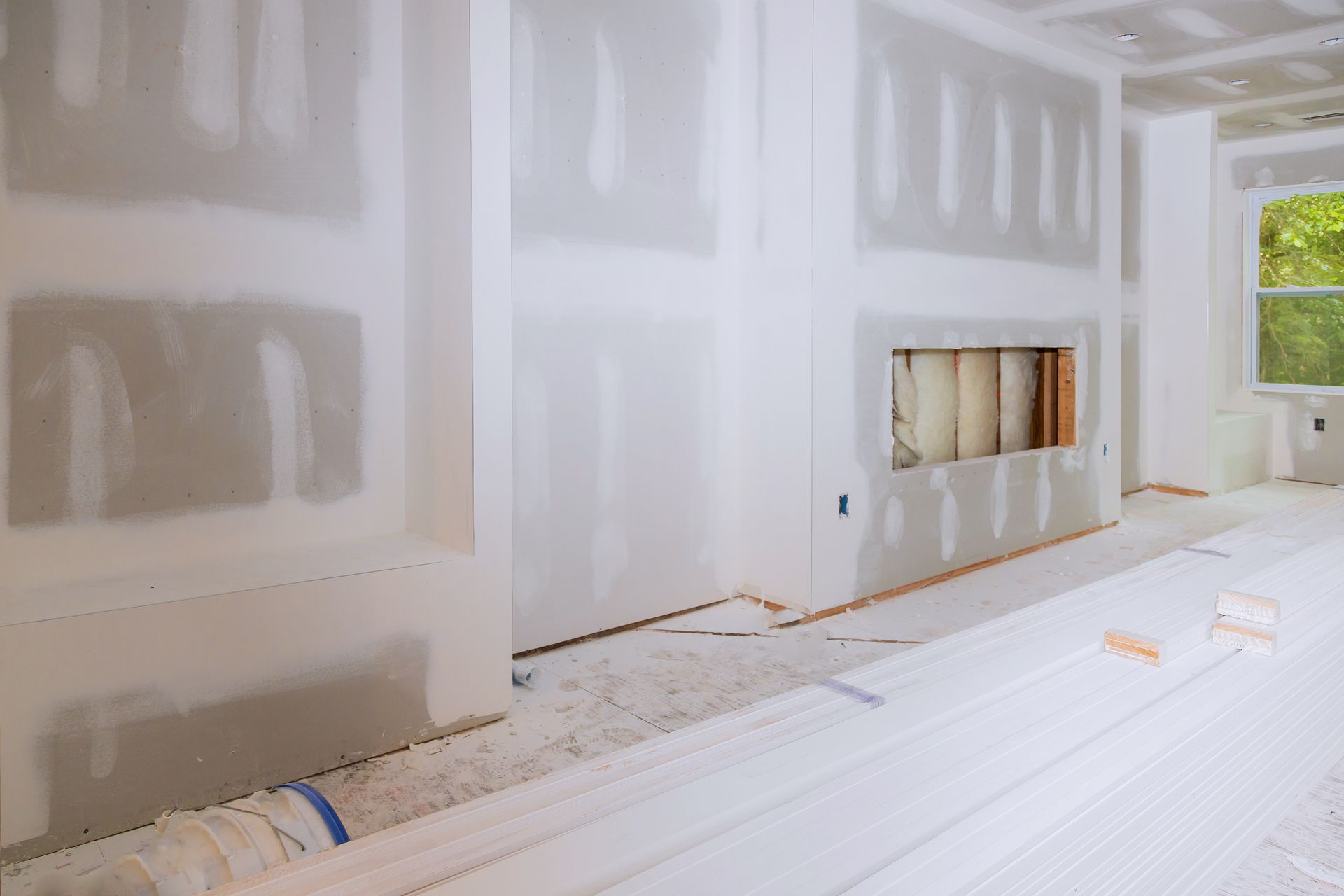Additions and Full Renovations
Redefine Your Home's Aesthetic with Professional Renovations & Additions
Additions and full renovations are comprehensive construction projects that aim to improve and expand residential spaces. These services encompass various tasks, from extending living areas and converting garages to completely remodeling kitchens and bathrooms, ensuring a functional and aesthetically pleasing home.
If you're looking to transform your living space with a home addition or full renovation, Oak & Pine Contracting is the ideal partner. Our expert team offers personalized services and professional craftsmanship to ensure quality results that align with your vision.
Our Home Addition Services
Expanding your living space with a well-planned addition can significantly enhance the functionality and value of your home. With numerous possibilities to choose from, it's essential to select the right type of addition that aligns with your needs, preferences, and budget for a truly transformative experience.
-
Home Extension Additions
Home extension additions refer to the process of expanding the current living space by building an extra room or area that is attached to the existing structure. This type of addition serves to accommodate the changing needs and preferences of homeowners.
Types of Home Extension Additions
Rear Extensions
Rear extensions involve expanding the back of the house, providing additional space for a larger kitchen, dining area, or family room. This type of extension is popular due to its minimal impact on the front appearance of the property.
Side Extentions
Side extensions are built along the side of the house, often converting narrow or unused spaces into functional rooms like a utility room, mudroom, or extended living area. These extensions can be single or multi-story, depending on the homeowner's requirements.
Front Extentions
Front extensions, although less common, can add square footage to the home by extending the facade. This type of extension is ideal for creating an inviting entrance or adding a porch or foyer to improve curb appeal.
Benefits
Increased living space through home extension additions allows homeowners to adapt their homes to their evolving needs, such as accommodating a growing family or creating a dedicated workspace.
Enhanced home functionality can improve the overall flow and usability of the space, making daily life more comfortable and enjoyable for the occupants.
-
Second-Story Additions
Second-story additions involve constructing an additional level above the existing structure, providing additional living space without increasing the home's footprint. This type of addition is suitable for homeowners looking to maximize their property's potential without encroaching on yard space.
Types of second-story additions
Full second story
Full second story involves constructing an entire new level above the existing structure, effectively doubling the available living space. This type of addition is ideal for accommodating growing families or creating separate living quarters for multi-generational households.
Partial second story
Partial second story includes adding a smaller upper level to a specific section of the house, such as above a garage or single-story wing. This option provides additional space while maintaining a balanced aesthetic and minimizing construction costs.
Benefits
Increased square footage without expanding the home's footprint allows homeowners to take full advantage of their property's potential without sacrificing outdoor space or altering the overall layout.
Improved property value can result from the addition of a second story, as larger homes with more living space typically command higher market prices.
-
Garage Conversions
Garage conversions transform an existing garage into a functional living space, such as a bedroom, office, or family room. This type of addition repurposes underutilized areas and provides a cost-effective alternative to building new structures.
Types of garage conversions
Living space conversion
Living space conversion involves transforming the garage into a comfortable and functional area for daily use, such as a bedroom, living room, or guest suite. This type of conversion often requires insulation, flooring, and other upgrades to create a cozy atmosphere.
Home office or workshop conversion
Home office or workshop conversion focuses on creating a dedicated workspace within the garage, complete with necessary storage and organization solutions. This option is ideal for homeowners looking to establish a quiet and productive environment away from the main living areas.
Benefits
Cost-effective way to add living space: Garage conversions typically require fewer resources and expenses compared to building a new addition, as the basic structure is already in place.
Utilization of existing structure allows homeowners to make the most of their property without altering the exterior appearance or encroaching on outdoor space.
-
Sunrooms and Conservatories
Sunrooms and conservatories are glass-enclosed structures built onto the side of a house, designed to provide a comfortable space for relaxation and enjoyment of the outdoors while remaining protected from the elements.
Types of sunrooms and conservatories
Three-season rooms
Three-season rooms are designed for use during spring, summer, and fall, providing a comfortable space for enjoying the outdoors while being shielded from rain, wind, and insects. These rooms typically have minimal insulation and may not be suitable for colder weather.
Four-season rooms
Four-season rooms are built with insulated glass and enhanced construction materials, allowing for year-round use and enjoyment. These rooms provide a comfortable space to enjoy the outdoors, regardless of the weather conditions outside.
Benefits
Enhanced connection with the outdoors: Sunrooms and conservatories allow homeowners to enjoy natural light and views of their surroundings while remaining protected from the elements, creating a serene and inviting atmosphere within the home.
Versatile use as a living area, dining space, or hobby room: The unique design and features of sunrooms and conservatories make them adaptable to various uses, such as a cozy sitting area, a bright dining space, or a dedicated spot for hobbies like gardening or painting.
Our Home Renovation Services
Embarking on a home renovation project can significantly enhance the aesthetics, functionality, and value of your property. Trust the experts at Oak & Pine Contracting to transform your living space, catering to your unique needs and preferences while ensuring top-quality craftsmanship and attention to detail.
-
Kitchen and Bathroom Renovations
Kitchen and bathroom renovations are focused updates targeting specific areas of the home that typically experience high usage. These renovations may involve upgrading fixtures, appliances, cabinetry, countertops, flooring, and wall treatments to create more functional, attractive, and efficient spaces.
Common upgrades and changes
Cabinetry and countertops
New cabinets and countertops can significantly impact the appearance and functionality of a kitchen or bathroom. Materials such as quartz, granite, and laminate offer various design options, while innovative storage solutions can optimize available space.
Plumbing fixtures and appliances
Updating sinks, faucets, showers, tubs, and toilets with modern, water-efficient models can improve a bathroom's aesthetics and functionality. Similarly, replacing older kitchen appliances with energy-efficient options can enhance performance and reduce energy consumption.
Flooring and wall treatments
New flooring and wall treatments can revitalize the look of kitchens and bathrooms. Popular options include ceramic or porcelain tiles, luxury vinyl planks, and moisture-resistant paint or wallpaper, which provide both style and durability.
Benefits of kitchen and bathroom renovations
Improved functionality and aesthetics
Well-planned kitchen and bathroom renovations can significantly enhance the usability and visual appeal of these spaces, creating a more enjoyable and efficient daily living experience.
Increased home value
Upgrading kitchens and bathrooms can substantially boost a property's market value, as these are often key selling points for potential buyers.
Enhanced energy efficiency and water conservation
Incorporating energy-efficient appliances and water-saving plumbing fixtures in kitchen and bathroom renovations can contribute to reduced utility bills and a more sustainable, eco-friendly home.
-
Basement Renovations
Basement renovations involve transforming an underutilized or unfinished basement area into a functional, comfortable living space. This may include creating additional living areas, home offices, workshops, or entertainment and recreational rooms tailored to the homeowner's needs and preferences.
Transforming underutilized space
Additional living areas
Basement renovations can provide much-needed extra living space, such as guest bedrooms, children's playrooms, or multi-purpose family rooms, enhancing the overall functionality of the home.
Home offices or workshops
With the increasing trend of remote work and home-based hobbies, basement renovations can accommodate dedicated offices or workshops, providing a quiet and focused environment for productivity and creativity.
Entertainment or recreational rooms:
Basements can be transformed into fun and inviting spaces, such as home theaters, game rooms, or fitness areas, providing a dedicated area for leisure activities and relaxation.
Benefits of basement renovations
Increased usable square footage
By renovating a previously unused or underutilized basement area, homeowners can significantly increase the total usable square footage of their homes, adding value and functionality to the property.
Improved home comfort and organization
A well-designed basement renovation can improve the overall comfort and organization of a home by providing additional living and storage spaces tailored to the homeowner's needs and preferences.
Potential rental income opportunities
For homeowners looking to generate extra income, basement renovations can be designed to create self-contained living spaces that can be rented out, providing a potential source of rental income.
-
Exterior Renovations
Exterior home renovations refer to the process of making improvements and modifications to the external appearance and structural components of a residential property. These modifications can range from simple cosmetic changes to more extensive structural alterations, which can improve the overall appearance, functionality, and value of the property. Typically, homeowners undertake exterior home renovations to enhance the aesthetic appeal of their homes, increase property value, and improve energy efficiency.
Types of Exterior Renovations
Siding Replacement
One common type of exterior home renovation is siding replacement. This involves removing the existing siding material and installing a new, more durable, and visually appealing option. Siding replacement can significantly boost the curb appeal of a home, while also improving insulation and reducing maintenance requirements. Popular siding materials include vinyl, wood, fiber cement, and metal.
Roof Replacement
Another common exterior renovation project is roof replacement. This involves removing the existing roofing material and installing a new, more durable, and weather-resistant option. Roof replacement can extend the lifespan of a home's roof, prevent leaks and water damage, and improve the overall appearance of the property. Popular roofing materials include asphalt shingles, metal, and tile.
Window and Door Upgrades
Upgrading windows and doors is another type of exterior home renovation that can provide numerous benefits. This type of project involves replacing old, inefficient windows and doors with new, energy-efficient, and visually appealing options. Window and door upgrades can improve a home's energy efficiency by reducing drafts and heat loss, while also enhancing the overall appearance and security of the property.
Deck Additions
Adding or upgrading a deck is a popular exterior home renovation project that can extend the living space of a home and provide an outdoor area for relaxation and entertainment. Deck additions can be customized to suit the homeowner's preferences and can incorporate various features such as built-in seating, outdoor kitchens, and fire pits. These additions can significantly enhance the functionality and value of a property without the need for landscaping or patio installations.
Benefits
Improved Curb Appeal
One of the primary benefits of exterior home renovations is the improvement in curb appeal. A well-maintained and visually appealing exterior can create a positive first impression on potential buyers and can significantly increase the value of a property. By investing in exterior home renovations, homeowners can ensure that their property stands out in the neighborhood and attracts potential buyers.
Increased Home Value
Another benefit of exterior home renovations is the potential increase in the property's value. Upgrading the home's exterior components, such as the siding, roof, windows, and doors, can result in a higher resale value and a quicker sale. Additionally, deck and patio additions can extend the living space and provide desirable outdoor amenities, further enhancing the value of the property.
Enhanced Energy Efficiency and Comfort
Exterior home renovations can also improve the energy efficiency and comfort of a home. By upgrading windows, doors, siding, and roofing materials, homeowners can reduce energy consumption, lower utility bills, and create a more comfortable living environment. Furthermore, these improvements can contribute to a more sustainable and eco-friendly home, which is an increasingly important consideration for many homeowners and potential buyers.
-
Whole-House Renovations
Whole-house renovations involve a comprehensive update and overhaul of an entire home, from its interior to exterior components. This type of renovation may include structural changes, layout modifications, and system upgrades to create a more functional, comfortable, and aesthetically pleasing living space that meets the homeowner's needs and preferences.
Components of a whole-house renovation
Structural changes and updates
These may include removing or adding walls, reinforcing foundations, or updating load-bearing structures to accommodate new design elements. Structural changes can significantly impact the overall layout and functionality of the home while ensuring safety and stability.
Interior design and layout improvements
Updating the interior design and layout may involve reconfiguring rooms, creating open-concept living spaces, or adding built-in storage solutions. These improvements aim to maximize the use of available space, enhance natural lighting, and create a more cohesive and visually appealing home environment.
Electrical, plumbing, and HVAC system upgrades:
Upgrading these essential systems can improve energy efficiency, increase the home's value, and ensure optimal performance. Modernizing electrical wiring, plumbing fixtures, and heating, ventilation, and air conditioning (HVAC) systems can also enhance comfort, safety, and cost savings in the long run.
Benefits
Enhanced functionality and aesthetics
A well-executed whole-house renovation can transform an outdated or inefficient home into a modern, functional, and visually appealing living space that caters to the homeowner's lifestyle and preferences.
Increased property value:
By addressing structural issues, updating systems, and improving the overall design, whole-house renovations can significantly boost the market value of a property, making it a sound investment for homeowners.
Improved energy efficiency
Incorporating energy-efficient materials, fixtures, and systems into a whole-house renovation can result in significant energy savings and reduced utility bills, contributing to a more sustainable and eco-friendly home.
FAQs
Embarking on a home addition or full renovation can be both exciting and daunting. To make the process as smooth as possible. and help you better understand what to expect, we've compiled answers to a few frequently asked questions about our services in Hamilton and surrounding areas in Ontario.
-
What is the process for planning and executing an addition or full renovation?
The process begins with an initial consultation to discuss your goals, budget, and timeline. Our experienced team will then work with you to design a plan that meets your needs and expectations. Once the design is finalized, we obtain all necessary permits and approvals before beginning construction. During construction, our team maintains open communication with you, ensuring any concerns are addressed promptly. Upon completion, we conduct a final walk-through to ensure your satisfaction with the finished project.
-
How long does it take to complete an addition or full renovation?
The duration of an addition or full renovation project can vary depending on factors such as size, complexity, and permitting requirements. On average, a full renovation can take anywhere from several weeks to a few months. Additions may take longer due to the need for foundation work and potential structural modifications. Our team at Oak & Pine Contracting will provide you with a detailed timeline at the outset of your project to help you plan accordingly.
-
How can I ensure that my addition or full renovation adds value to my home?
To maximize the value of your addition or full renovation, it's important to focus on quality craftsmanship, functional design, and timeless aesthetics. By working with an experienced contractor like Oak & Pine Contracting, you can rest assured that your project will be completed with high-quality materials and attention to detail. Additionally, our team can provide guidance on design choices and improvements that will have the greatest impact on your home's resale value, ensuring that your investment pays off in the long run.
-
How much does an addition or full renovation cost?
The cost of an addition or full renovation depends on factors such as materials, labor, and the overall scope of the project. It's essential to establish a budget early in the planning process to ensure that your project stays within your financial means.
Contact us at Oak & Pine Contracting, & we'll work with you to develop a plan that balances your desired outcomes with your budget constraints.
Our Services
Oak & Pine Contracting provides a comprehensive range of services, tailored to meet your home improvement needs. Our skilled team ensures exceptional results and a seamless experience, for you and your family.
